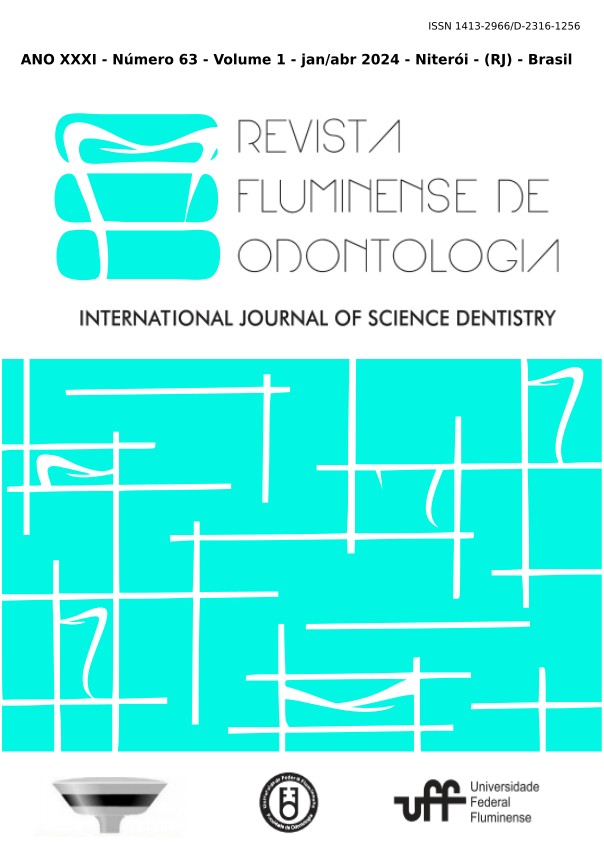SURFACE ROUGHNESS OF THREE DIFFERENT GLASS IONOMERS WITH OR WITHOUT FINISHING/POLISHING: AN IN VITRO STUDY
DOI:
https://doi.org/10.22409/ijosd.v1i63.58180Resumen
Purpose: This study aimed to compare the surface roughness among 3 types of glass ionomers (GI) before (no polishing) and after polishing with three different materials.Methods: 20 discs for each GI group were obtained (A-Ionolux; B-IonoStar Plus; C-Ketac). Those groups were subdivided according to finishing and polishing: subgroups 1 (control) - no polishing, 2 - polishing with prophylactic brush and pumice paste, 3 - Enhance tips with water, and 4 - Sof-Lex system with Easy Glaze and polymerization. For each disc face, the total distance analyzed was 2.88cm (6x48mm). Then, the roughness was compared using the Kruskal-Wallis with Bonferroni test, with significant data if p<0.05.Results: The mean of roughness within Group A was lower for subgroup 4 (1.07±0.54 μm) and higher for subgroup 2 (2.33±1.17 μm). Within group B, B4 had the lowest mean of roughness (0.93±0.38 μm) and B2 (1.24 ± 0.78 μm) the highest roughness. Within group C, Group C4 had the lowest mean roughness value (0.84±0.54 μm), and C3 had the highest mean (2.48±1.05 μm). After polishing, subgroup 4 had the general lowest values for surface roughness (mean Ra 0.95), followed by subgroup 1 (Ra=1.27), subgroup 2 (Ra=1.89), and higher values for subgroup 3. All intragroup analysis for A, B, and C were statistically significant. Group A presented the highest roughness (p<0.05), and no statistically significant evidence existed between groups B and C (p>0.05).Conclusion: The reduction of the roughness of the materials is dependent on their composition and the polishing and finishing techniques applied.
Keywords: Glass ionomers; Surface; Roughness; Polishing; Finishing





